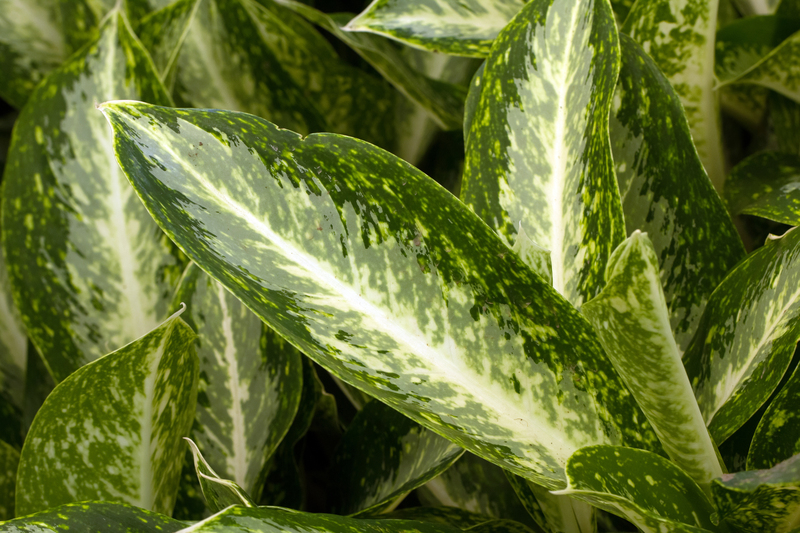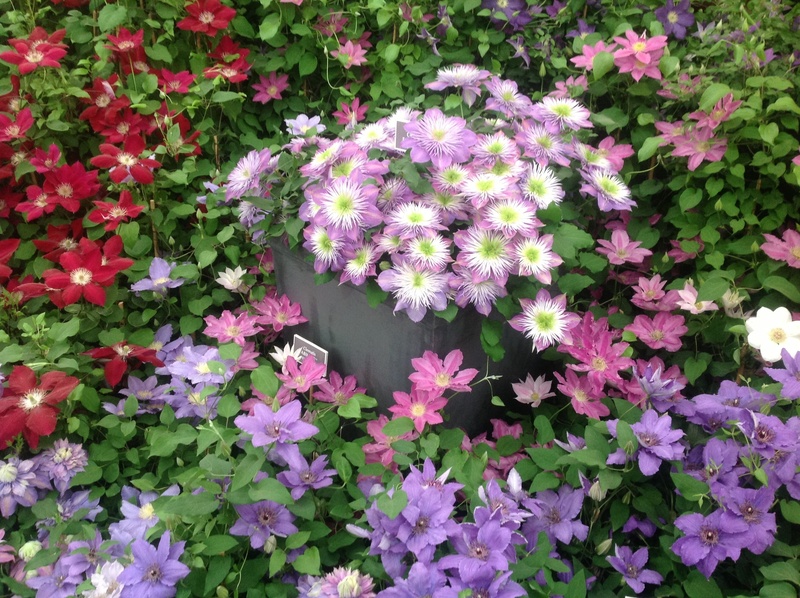Expert Tips for Stunning Hedge Trimming Effects
Posted on 18/06/2025
Expert Tips for Stunning Hedge Trimming Effects
Hedge trimming is more than a routine gardening chore--it's an art form that shapes the natural framework of your landscape. Whether you nurture a classic boxwood border or dream of bold topiary masterpieces, the right trimming strategies can transform ordinary shrubs into living sculptures. In this comprehensive guide, we'll reveal professional hedge trimming tips and technical insights for achieving truly stunning hedge effects in any garden. Read on for in-depth advice, expert-recommended techniques, and creative ideas for both beginners and seasoned garden enthusiasts.

Why Hedge Trimming Matters: More Than Just Curb Appeal
Beyond enhancing the beauty of your property, regular and well-executed hedge trimming impacts:
- Plant health: Encourages denser, healthier growth and minimizes disease risks.
- Safety and privacy: Keeps walkways clear and creates attractive natural screens.
- Landscape design: Defines spaces and highlights your garden's best features.
Achieving breathtaking hedge shapes and maintaining lush greenery become effortless when you employ expert trimming knowledge, precision techniques, and the right tools.
Getting Started: Essential Tools and Preparation
Choose Your Tools Wisely
Before you begin, assemble quality tools for the best hedge trimming results. Key implements include:
- Manual hedge shears for fine shaping and detailed work
- Powered hedge trimmers (corded, cordless, or gas) for quick, uniform cuts
- Secateurs or hand pruners for snipping thick branches and touch-ups
- Loppers for larger stems and rejuvenation pruning
- Protective gloves and safety goggles to prevent injuries
- A sturdy ladder for reaching tall hedges safely
- A measuring tape or string lines for guidance and symmetry
Preparation Steps
- Inspect hedges for nesting birds--delay trimming during nesting season to protect wildlife.
- Clear the area of obstacles, debris, and garden ornaments.
- Sharpen blades for cleaner cuts to reduce plant stress and disease risks.
Picking the Best Time to Trim Hedges
TIMING IS KEY when aiming for professional-looking results. The optimal timing for hedge cutting ensures robust regrowth and neat shapes. Follow these guidelines:
- Evergreen hedges: Trim in late spring or early summer after new growth appears.
- Deciduous hedges: Prune in late winter or early spring while dormant, or after flowering if grown for blooms.
- Fast-growing formal hedges: Lightly trim two or three times between spring and early autumn.
Tip: Avoid heavy pruning in late autumn as new growth could be damaged by winter frost.
Techniques for the Best Hedge Trimming Effects
Create a Neat Framework
- Establish the outline: Use stakes and string as guides along the top and sides for uniform, straight edges.
- Bottom-up approach: Begin trimming from the base and move upwards. This ensures a tidy finish and prevents uneven growth accumulation at the top.
- Taper the shape: Keep the base wider than the top for stability and maximum light exposure. This prevents lower leaves from becoming sparse.
Trimming for Different Hedge Styles
- Formal Hedges: Use powered trimmers and string lines for razor-sharp geometric outlines.
- Informal Hedges: Use hand shears to preserve the plant's natural growth while enhancing its shape.
- Topiary Art: Select topiary frames or freehand techniques for creative patterns, spirals, balls, and animal shapes. Prune steadily, making small adjustments for symmetry.
Keep it Level and Symmetrical
For a breathtaking finish, step back frequently to assess the overall look. Use a bubble level for large, formal hedges. Consistent stepping back prevents excessive removal on one area and ensures a smooth result.
Dealing with Mature and Overgrown Hedges
- Rejuvenation Pruning: For woody, sparse, or overgrown bushes, cut back up to one-third of the oldest stems at ground level. This stimulates lush new growth. Repeat over two or three years if necessary.
- Incremental Shaping: Avoid trying to restore an overgrown hedge's shape in one go. Spread heavy pruning over two seasons for plant health and even development.
Achieving Precision and Professionalism
Expert Strategies for Sharp Edges
For straight, precise lines, work slowly and steadily. Holding the trimmer at a slight angle allows for even surface cutting. Use both hands on powered trimmers for control. Lightly overlap each cut to avoid missed spots.
Expert Tip: Try the "eye-level" test--stand at the end of the hedge and sight along the top for dips and humps. Correct deviations immediately for a seamless appearance.
Special Effects: Curves, Arches, and Topiary
- Curved Hedges: Employ flexible garden hoses or ropes pinned as templates for smooth, even arcs.
- Arches: Train branches around horizontal supports before shaping. Prune lightly at first, gradually defining the arch.
- Topiary Balls & Spirals: Use pre-formed wire frames or mark out your design with chalk before trimming. Move slowly and check symmetry from multiple angles.
Common Hedge Trimming Mistakes (and How to Avoid Them)
- Over-pruning: Removing too much at once shocks the plant and leaves bald patches. Trim little and often.
- Ignoring plant variety: Every species has unique growth habits. Research your hedge's requirements for best results.
- Uneven bases: A narrow base looses lower foliage. Always leave more width at the bottom.
- Blunt blades: Dull tools damage stems, inviting disease. Sharpen blades regularly.
- Trimming at the wrong season: Off-season trimming can delay or disrupt growth. Follow the recommended schedule for your hedge species.
Advanced Tricks for Stunning Hedge Trimming Effects
Double-Cut Technique
For showstopping sharpness, make an initial "rough cut" to shape the hedge. After cleaning up debris, go over the surface again, removing finer amounts for a velvet-smooth finish. Professional landscapers use this method for the crispest effects.
Layered Hedges and Mixed Planting
- Mix species with complementary shapes or colors. Prune selectively to create variegated, multi-height hedge effects.
- Plant fragrant flowering shrubs (like lavender or viburnum) in front of evergreen hedging--trim back gently so blooms spill over for striking, layered results.
Creative Edging and Contrast
- Edge the lawn crisply along the hedge base with a half-moon edger. This highlights clean lines and increases the visual impact.
- Pair formal hedges with loose, naturalistic borders or wildflowers for organic contrast.
Post-Trimming Care: Keeping Hedges Lush and Healthy
- Water generously after heavy trimming--especially during dry periods.
- Apply a balanced fertilizer in spring to encourage thick regrowth.
- Mulch the base to retain moisture and suppress weeds.
- Inspect for pests and diseases; remove infected material promptly.
Final inspection: Always clear all trimmings and debris. Organic material can be shredded for compost or mulch. Step back and admire your work--a well-trimmed hedge is a living testament to patience and skill!

FAQ: Your Hedge Trimming Questions Answered
1. How often should I trim my hedge?
Frequency depends on hedge type. Fast-growing species (like privet or leylandii) may need up to three trims a year, while slow-growing types require less frequent pruning.
2. What's the secret to sharp, straight edges?
Use guide strings, sharp blades, and take your time. For perfectly straight hedges, align your cuts carefully and check symmetry frequently.
3. Can I shape an old, overgrown hedge?
Gradual rejuvenation pruning is key. Avoid drastic cuts in one go. Remove the oldest branches first and shape over several seasons for recovery and regrowth.
Conclusion: Transform Your Garden with Professional Hedge Trimming
By mastering hedge trimming artistry with these expert tips, you can elevate any outdoor space from average to absolutely striking. Remember, stunning hedge effects stem from precision, patience, and regular maintenance. Start with good tools, stick to a trimming routine, and experiment with creative designs to enjoy a garden that truly stands out all year round.
Are you ready to transform your hedges? Follow these techniques, embrace your creativity, and experience the joy of a beautifully sculpted landscape!

